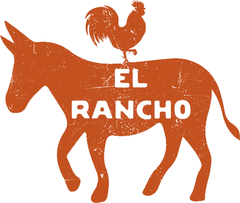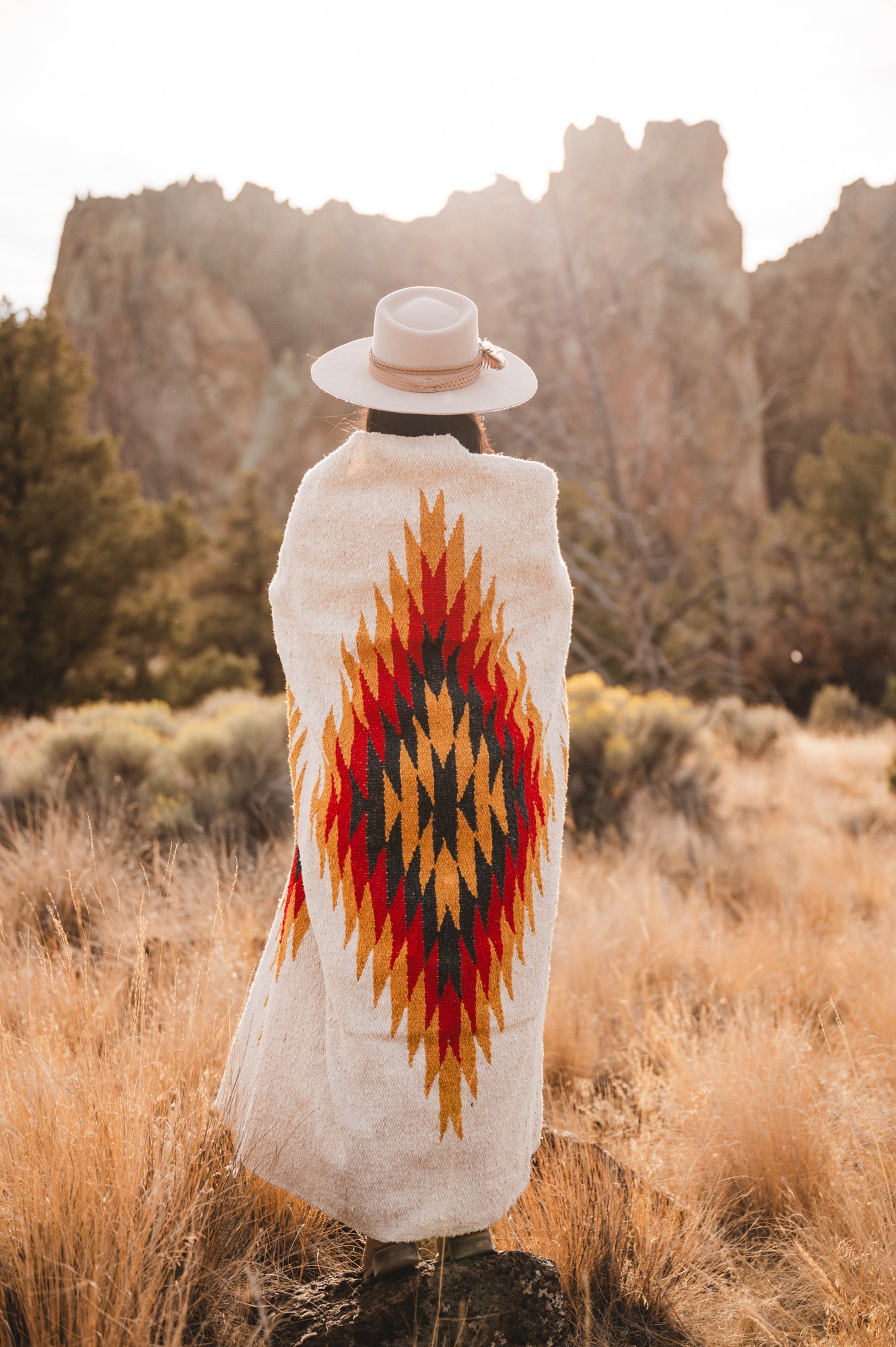The Electrifying Legacy of the Relámpago Design: Lightning Woven into Oaxaca's Soul
Hey there, fellow wanderers and culture enthusiasts! If you've ever run your fingers over a handwoven Oaxacan rug and felt a spark of something ancient and alive, you're not alone. Today, we're diving into the world of the **Relámpago design**—a zig-zagging bolt of lightning that's more than just a pretty pattern. It's a thunderous tribute to indigenous heritage, born from the arid valleys of Oaxaca, Mexico. Picture this: threads of sheep's wool dyed with cochineal reds and indigo blues, dancing across a loom to capture the fury of a storm god. Let's unravel its story, from pre-Columbian roots to modern masterpieces.
Roots in the Valley of the Weavers: Teotitlán del Valle
Nestled about 30 kilometers east of Oaxaca City, Teotitlán del Valle is the beating heart of Zapotec weaving. This unassuming town, home to around 6,000 Zapotec descendants, has been a textile powerhouse for over 2,000 years. The Zapotec civilization, one of Mesoamerica's oldest, thrived here from around 500 B.C., crafting cotton garments on backstrap looms that symbolized status and spirituality. Fast-forward to the 16th century: Spanish colonizers arrived with sheep, spinning wheels, and pedal looms, transforming local cotton weaving into the woolen rug tradition we know today. What started as elite tilmas (cloaks) evolved into vibrant sarapes and tapestries that tell stories of the land, gods, and daily life.
But the Relámpago? It's no colonial import. This design pulses with pure Zapotec essence, drawing from a cosmology where nature's forces were divine. In Teotitlán, nearly every home doubles as a workshop, with families passing looms and lore down generations. Women, often the backbone of the craft, spin wool while men weave intricate patterns— a rhythm that's sustained the community through conquest, revolution, and globalization.
The Design That Strikes Like Lightning: Symbolism and Cocijo
At its core, Relámpago means "lightning" in Spanish, and the motif is a bold zig-zag line slicing through the rug's center, often flanked by diamonds or geometric "diamantes" that evoke raindrops or fertility symbols. It's not random flair; it's a homage to **Cocijo**, the Zapotec god of lightning, rain, and storms—think of him as the Mesoamerican Zeus, complete with a thunderbolt scepter. Just as the Aztec Tlaloc demanded reverence for bountiful harvests, Cocijo's electric fury was both destroyer and life-giver in Zapotec lore. A flash of Relámpago on a rug isn't decoration; it's a prayer for rain in Oaxaca's parched valleys, where agriculture hinges on the heavens.
These motifs aren't static museum pieces—they evolve. Traditional Relámpago rugs stick to earthy tones from undyed wool (whites, browns, blacks), but contemporary weavers remix them with pops of pomegranate yellow or pecan-shell tan, blending ancient icons with modern minimalism. Spot one, and you're holding a piece of cosmology: lightning as chaos and renewal, woven into wool.
From Sheep to Loom: The Art of Creation
Crafting a Relámpago rug is a labor of love that can take weeks—or months—for a single piece. Here's a glimpse into the magic:
1. **Sourcing and Prep**: Local sheep provide the wool, sorted by natural shades. It's washed to banish dirt, then carded (combed) with wooden tools to fluff it up, a meditative task often done by the fireside.
2. **Spinning the Thread**: Using pedal-driven spinning wheels (a Spanish gift), artisans twist the wool into even yarn. Consistency is key—too thick, and the weave warps.
3. **Dyeing with Nature's Palette**: No synthetic shortcuts here. Cochineal insects yield fiery reds, indigo ferments for deep blues, and moss or marigolds brew greens. Yarn simmers in vats for hours, then dries under the Oaxacan sun. Lighter shades? Multiple dips in diluted baths.
4. **Weaving the Storm**: On sturdy pedal looms, the weaver follows a hand-sketched design template to bring the fabric to life.
The result? Reversible rugs that feel like walking on history—soft, durable, and scented faintly of earth.
Relámpago Today: From Village Looms to Global Homes
In an era of fast fashion, Relámpago endures as cultural resistance and economic lifeline. Teotitlán's weavers export worldwide via cooperatives and online markets, but challenges loom: climate change dries dye plants, and cheap imports undercut prices. Yet, innovation sparks hope—young artists fuse Relámpago with abstract geometrics, turning rugs into wall art or cushions.
Want to bring home a bolt? Hunt ethical sellers like us from Teotitlán. Visit the Oaxaca Textile Museum for a deep dive, or better yet, trek to a workshop in the valley. Touch the looms, chat with weavers, and feel the thunder.
A Final Spark: Why Relámpago Matters
The Relámpago design isn't just threads—it's Oaxaca's lightning rod, channeling ancient Zapotec thunder into tangible beauty. In a world that races past traditions, it reminds us: true power lies in the patient weave of stories, symbols, and storms. Next time you see that zig-zag flash, remember Cocijo watching from the clouds. What's your favorite Oaxacan craft? Drop a comment below—let's keep the conversation weaving!
*Safe travels and happy hunting for that perfect rug. Until next time, ¡viva Oaxaca!*


